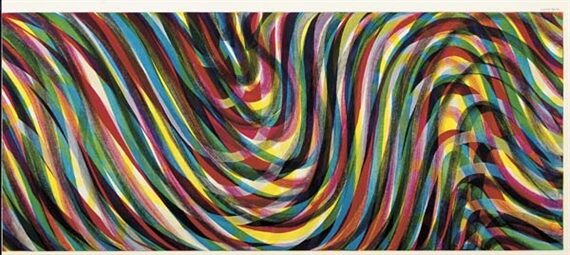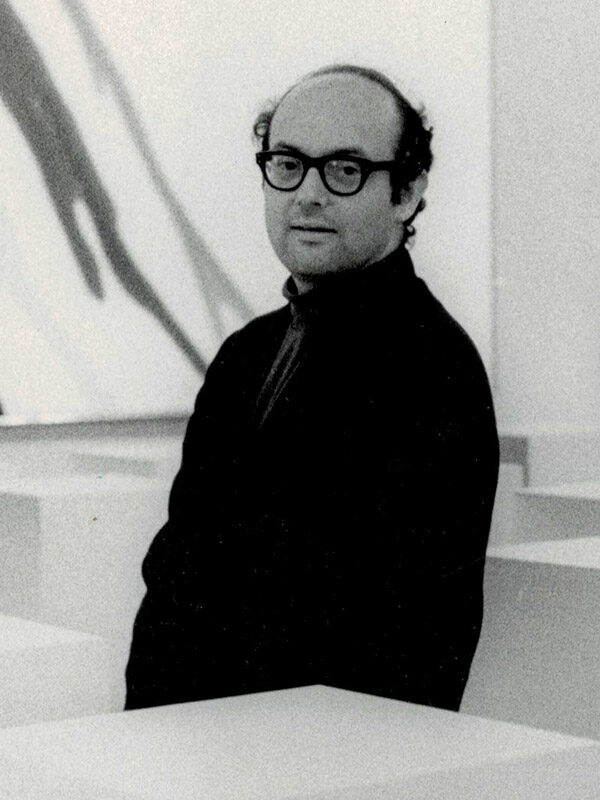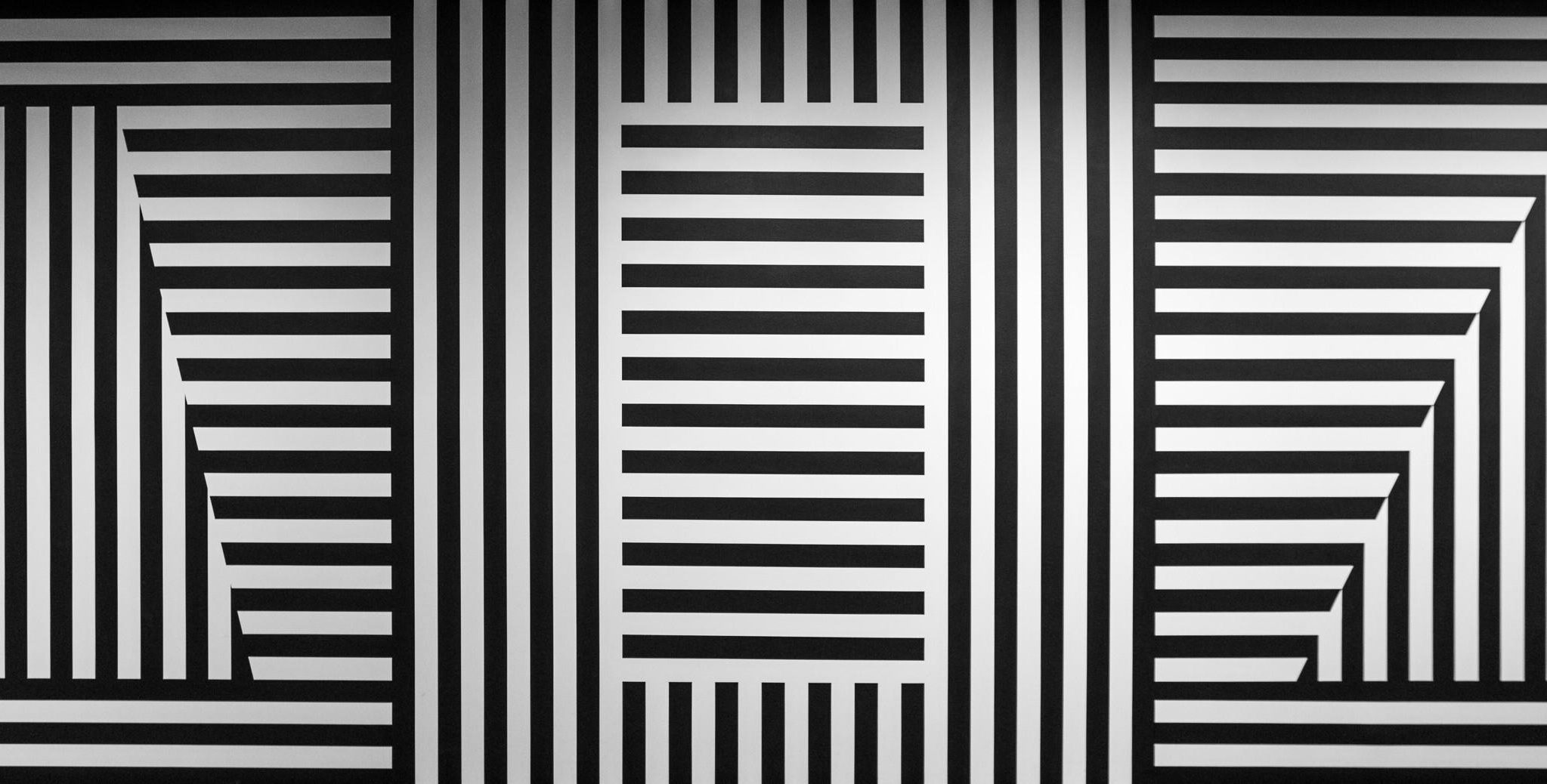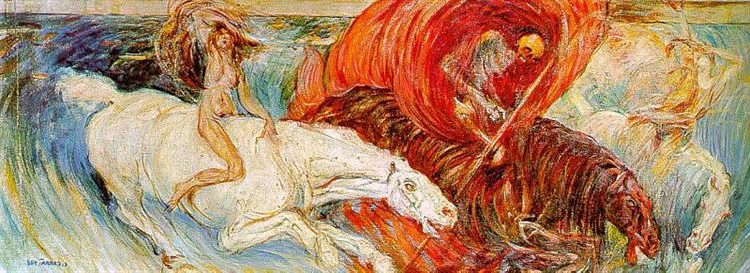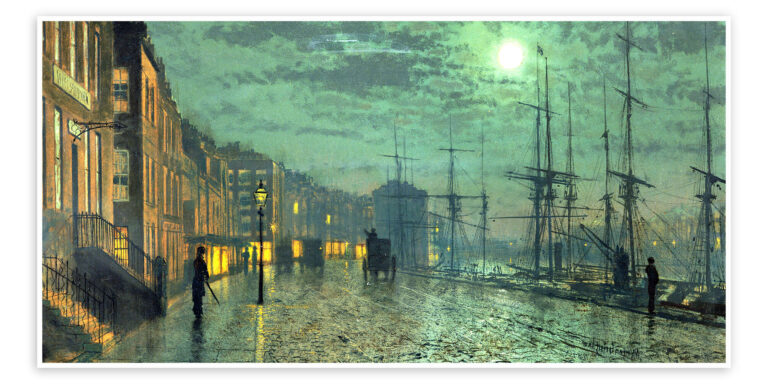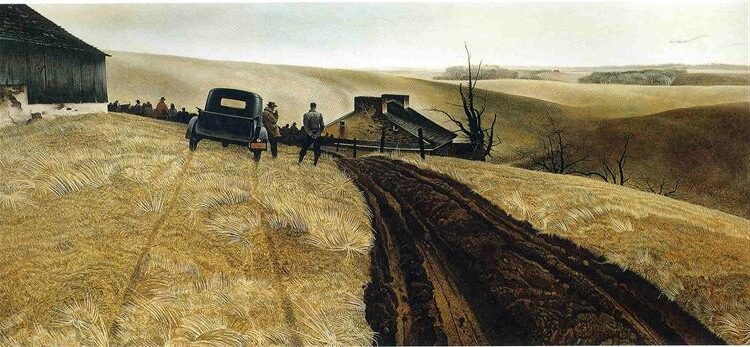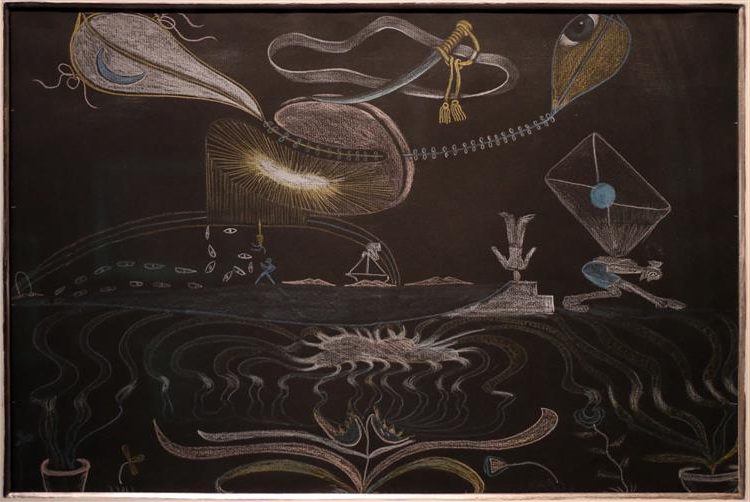Sol LeWitt Painter: The Conceptual Artist Who Redefined Visual Expression
Born: September 9, 1928, Hartford, Connecticut, US
Death: April 8, 2007, New York City, US
Art Movement: Conceptual Art, Minimalism
Nationality: American
Influenced By: Eadweard Muybridge
Institution: Syracuse University, School of Visual Arts
Sol LeWitt Painter: The Conceptual Artist Who Redefined Visual Expression
Biography and Early Influence
Sol LeWitt’s journey from childhood to artistic prominence was shaped by his early environment, educational experiences, and professional endeavors before fully dedicating himself to art.
Early Years in Hartford, Connecticut
Sol LeWitt was born Solomon LeWitt on September 9, 1928, in Hartford, Connecticut. He grew up as the child of Russian Jewish immigrants in a working-class neighborhood.

Wall Drawing #370, 1982, by Sol LeWitt
His parents recognized his artistic talents early, encouraging his creative interests. Tragically, LeWitt’s father died when Sol was just six years old, leaving his mother to raise him during the challenging years of the Great Depression.
Hartford’s industrial landscape and geometric architecture would later influence LeWitt’s aesthetic sensibilities. His early exposure to structure and form in the urban environment contributed to his later explorations of geometric abstraction and systematic art.
Education at Syracuse University
LeWitt received formal artistic training at Syracuse University, where he earned his Bachelor of Fine Arts (BFA) degree in 1949. His time at Syracuse marked his first serious engagement with printmaking, a medium he would return to throughout his career.
At the university, LeWitt studied a traditional fine arts curriculum that established his technical foundation. He explored various artistic styles and approaches while developing his unique perspective.
After graduation, LeWitt was drafted into military service during the Korean War in 1951. His military experience exposed him to different cultures and perspectives, particularly during his time in Japan.
Graphic Design Career
Following his military service, LeWitt moved to New York City in the early 1950s. He worked as a graphic designer for the architectural magazine Seventeen and later at the office of architect I.M. Pei.
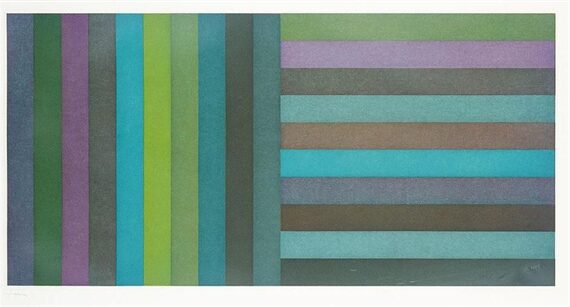
Horizontal Colour Bands and Vertical Colour Bands I, 1991
These professional experiences significantly influenced his artistic development. Working in graphic design taught LeWitt principles of layout, typography, and visual communication that would later appear in his conceptual works.
His design background cultivated an appreciation for clarity, precision, and systematic approaches. These qualities became hallmarks of his artistic style. While working in design, LeWitt continued developing his artistic practice, gradually transitioning from commercial work to fine art.
During this period, LeWitt encountered the work of artists like Jasper Johns and Eadweard Muybridge, whose influence would help shape his artistic vision.
Artistic Evolution and Contribution
Sol LeWitt’s artistic journey transformed modern art through his innovative approaches to creation and presentation. His work evolved from minimalist structures to complex wall drawings, establishing new paradigms for how art could be conceived and executed.
Conceptual Art and Minimalism
LeWitt played a pivotal role in establishing Conceptual art as a major movement. His famous statement “the idea becomes a machine that makes the art” formed the foundation of his philosophy. Unlike traditional artists, LeWitt prioritized the concept over the finished product.
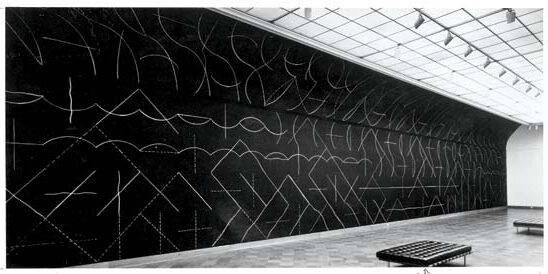
Wall Drawing #260, 1975, by Sol LeWitt
He emerged as a leading Minimalist in the 1960s with his geometric structures. However, LeWitt’s work transcended pure Minimalism as he focused on systems and ideas rather than just simplified forms.
His practice challenged conventional notions of authorship and originality in fine art. LeWitt believed that the idea was paramount, while execution was secondary—a revolutionary concept that influenced generations of artists.
Innovative Drawing and Painting Techniques
LeWitt’s wall drawings represented a dramatic shift in how art could be created and experienced. Beginning with simple graphite works in the late 1960s, his technique evolved to include crayon, colored pencil, and later vibrant India inks.
Each drawing existed as a set of instructions that could be executed by others. This approach separated the concept from physical creation, allowing the work to be realized differently each time it was installed.
His wall drawings explored systematic variations of lines, colors, and shapes. Some featured precise geometric patterns while others incorporated flowing curves and bold color combinations.
These works blurred the boundary between drawing and painting, creating immersive environments rather than discrete objects.
Structures and Sculptures
LeWitt’s three-dimensional works, which he called “structures” rather than sculptures, explored geometric forms through systematic variation. His most famous series, “Incomplete Open Cubes” (1974), methodically presented all possible variations of an open cube missing between one and nine edges.
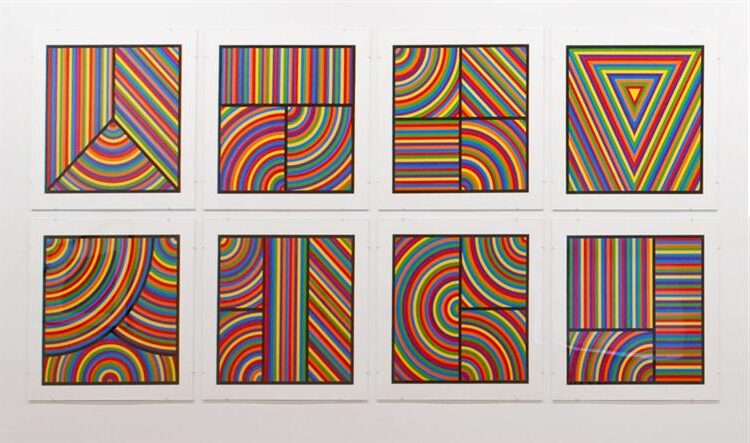
Color Bands (Wadsworth Portfolio), 2000, by Sol LeWitt
These white structures exemplified his interest in mathematical systems and seriality. Though visually simple, they embodied complex ideas about perception and possibility.
LeWitt also created large-scale concrete block structures that functioned as architectural interventions. These works played with dimension, form, and negative space.
His approach to three-dimensional work maintained the conceptual rigor of his drawings while engaging with physical space in profound ways.
Role of Assistants in Art Creation
Unlike traditional artists who personally execute their visions, LeWitt developed a revolutionary collaborative approach. He created detailed instructions for wall drawings that teams of assistants would implement.
This method challenged the notion of the artist’s hand as essential to authenticity. LeWitt trained assistants carefully, but allowed for their interpretation within his parameters.
The use of assistants wasn’t merely practical—it was conceptually integral to his work. It demonstrated his belief that the idea, not the execution, constituted the artwork’s core.
This collaborative model influenced many contemporary artists and institutions. Today, museums and galleries continue to realize LeWitt’s wall drawings using his instructions, keeping his work alive beyond his lifetime.
Exhibitions and Legacy
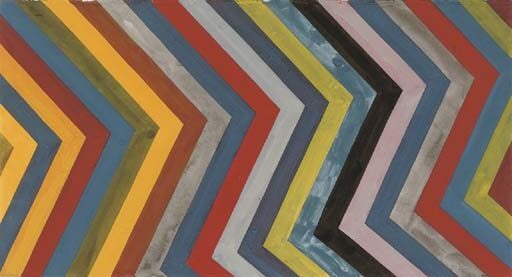
Irregular Bands with Colors Superimposed, 1991, by Sol LeWitt
Sol LeWitt’s work continues to be celebrated in prestigious institutions worldwide. His innovative approach to conceptual art has influenced generations of artists since the 1960s, establishing a lasting legacy that extends beyond his lifetime.
Notable Galleries and Museums
The Museum of Modern Art (MoMA) in New York holds one of the most significant collections of LeWitt’s work. His pieces are also prominently featured at the National Gallery of Art in Washington, D.C. and the San Francisco Museum of Modern Art.
The Guggenheim Museum regularly displays LeWitt’s wall drawings and three-dimensional structures, including his famous geometric forms. His “Four-Sided Pyramid” became an iconic installation at the National Gallery’s Sculpture Garden.
The Hirshhorn Museum and Sculpture Garden in Washington maintains several major LeWitt works in its permanent collection. Many of these institutions collaborate with trained assistants who execute LeWitt’s wall drawings according to his precise instructions.
Prominent Exhibitions and Retrospectives
In recent years, Yale University Art Gallery received a significant donation of LeWitt wall drawings from the artist’s estate. This collection expands their already impressive holdings of his work.
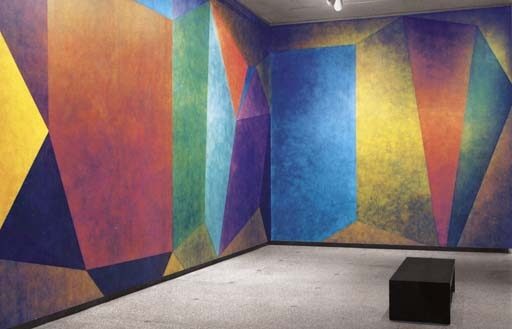
Wall Drawing #522, 1987, by Sol LeWitt
The Jewish Museum mounted a special exhibition featuring four massive wall drawings recreated specifically for their space. These installations demonstrate LeWitt’s enduring appeal and the continuing relevance of his conceptual approach.
“Call Sol: The Enduring Legacy of Sol LeWitt” focused on ten contemporary artists influenced by LeWitt’s methods and philosophy. This exhibition highlighted how his conceptual frameworks continue to inspire working artists today.
Major retrospectives of LeWitt’s career have been organized by MoMA, the Whitney Museum, and international venues. These comprehensive shows typically feature his wall drawings, structures, and works on paper spanning multiple decades.
Frequently Asked Questions
Sol LeWitt revolutionized art by emphasizing the idea over the physical artwork itself. His conceptual approach and distinctive wall drawings continue to challenge traditional notions of authorship, permanence, and artistic creation.
What is the significance of Sol LeWitt’s contribution to Conceptual Art?
Sol LeWitt helped establish Conceptual Art as a major movement by prioritizing ideas over physical objects. He famously stated that “the idea becomes a machine that makes the art,” shifting focus from craftsmanship to concept.
His work demonstrated that art could exist primarily as an idea, with its physical manifestation being secondary. This approach fundamentally changed how people understood what constitutes art.
LeWitt’s emphasis on systems, instructions, and conceptual frameworks provided a blueprint for generations of artists working with ideas rather than traditional art materials.
How do Sol LeWitt’s wall drawings challenge traditional art-making methods?
LeWitt’s wall drawings separated the artist from the physical creation of the artwork. Instead of making the drawings himself, he created detailed instructions for others to execute.
This approach challenged the notion that an artist must physically create their work. It questioned traditional ideas about artistic skill, authorship, and the value of the artist’s hand.
His wall drawings are temporary by nature – they’re created for specific exhibitions and painted over afterward. This impermanence challenges the art market’s focus on collectible objects.
Can you explain the process behind Sol LeWitt’s wall drawing instructions?
LeWitt created precise written instructions that specified how his wall drawings should be executed. These directions detailed lines, shapes, colors, and patterns to be applied directly to walls.
Trained teams of assistants or museum staff follow these instructions to create the works. The process often takes weeks of careful, methodical application following LeWitt’s exact specifications.
Though the teams have some interpretive freedom, they must adhere to LeWitt’s guidelines. This balance between rigid instruction and human interpretation creates subtle variations each time a work is installed.
What role did Sol LeWitt play in the development of Minimalist art?
LeWitt was a pioneering figure in both Minimalism and Conceptual art. His early three-dimensional “structures” (he preferred this term to “sculptures”) featured simple geometric forms arranged in systematic ways.
He embraced minimalist principles of simplicity, geometric precision, and industrial materials. His work stripped away narrative, emotion, and representation to focus on pure form.
However, LeWitt eventually moved beyond strict Minimalism by introducing more complex systems and variations. His approach to art-making as a conceptual exercise influenced both movements significantly.
How has Sol LeWitt’s work influenced contemporary art practices?
LeWitt’s separation of concept from execution has influenced countless contemporary artists who work with instructions, participation, and delegated performance. His approach enables artwork to exist in multiple locations simultaneously.
His systematic approach to creating variations within defined parameters has parallels in digital and algorithmic art. Many contemporary artists use rule-based systems similar to LeWitt’s methodology.
LeWitt’s wall drawings also pioneered site-specific installation art, emphasizing how artwork relates to its architectural environment. This approach remains central to installation art practices today.
Why is the Sol LeWitt exhibition at MASS MoCA considered important for understanding his work?
The MASS MoCA installation features 105 of LeWitt’s wall drawings in a long-term exhibition. It spans nearly an acre of specially designed interior walls. This unprecedented scale allows visitors to experience the full range of his artistic development.
The exhibition took over six months to complete. Dozens of artists and art students meticulously executed LeWitt’s instructions. This massive undertaking demonstrates the collaborative nature of his practice.
Seeing so many works together reveals the evolution of LeWitt’s visual language over decades. Visitors can trace his progression from simple line drawings to increasingly complex and colorful compositions.

